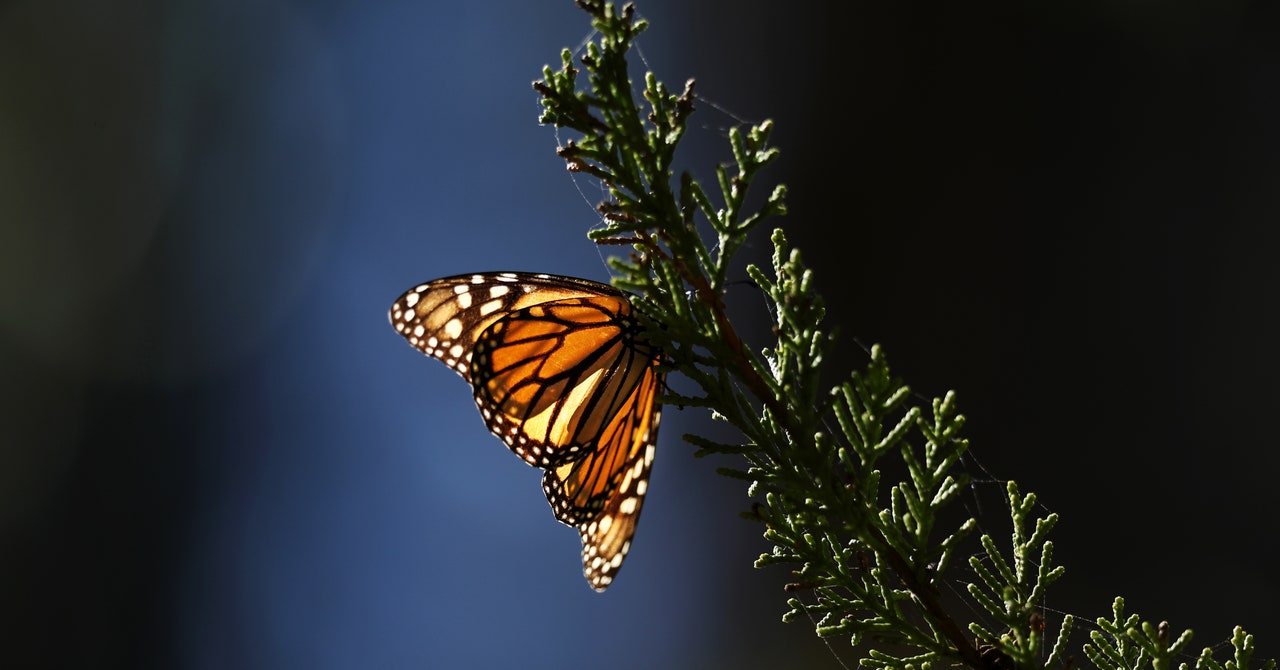
Last month, government officials met in Washington, DC, for the first Monarch Butterfly Summit, just as the milkweed in the “Monarch Waystations” that are now ubiquitous across American lawns began to bloom. Like everyone, they were worried about the iconic insect’s fate, following decades of notable population decline in the butterfly’s winter colonies.
There are two distinct (but genetically identical) populations of monarchs in the United States, and both are migratory. Monarchs west of the Rocky Mountains spend their winters in Southern California, while those east of the range fly thousands of miles from as far north as Ontario to central Mexico, where they wait out the cold months in stands of oyamel fir trees. Since the mid-90’s, scientists have found that the number of butterflies that make it to Mexico has fallen by about 70 percent. They blame bad weather, deforestation, and automobile collisions for the decline.
In 2020 alone, 26 percent fewer eastern monarchs made it to Mexico than the year before, having been waylaid by storm and drought. Those that survived the journey found their already-tiny wintering grounds reduced by illegal logging. In 2019, researchers concluded that the western monarch was “hovering at its quasi-extinction threshold” after a 97 percent reduction in that subpopulation since the 1980s.
So it may be surprising—and perhaps controversial—that a recent study published in the journal Global Change Biology suggests that some populations of monarch butterflies are actually on the rise. “There is no monarch butterfly apocalypse,” says Andrew Davis, an ecology professor at the University of Georgia (UGA) and coauthor of the study. “Not in the United States, anyway.”
His group’s work is unusual because it focuses on the insects’ breeding grounds, not their migratory stopovers. In other words, the team looked at counts taken in the summer throughout the US, not in the winter in Mexico or Southern California. Davis and his fellow researchers relied on more than 135,000 monarch observations made on both sides of the Rockies between 1993 and 2018 during the North American Butterfly Association’s (NABA) annual count. These events call on citizen scientists to record all the butterflies they see in a 15-mile radius over two days in early July.
While the research team noted that there have been slight declines in some regions of the US, particularly the Midwest and New England, areas like the Southeast and Pacific Northwest are seeing more monarchs. Taken together, the data suggests an overall annual increase of 1.36 percent across the species’ summer range, meaning that over the 25-year period, the summer population of monarchs in the US has increased by about 35 percent.
Davis says his team’s findings demonstrate that the butterflies’ breeding in summer is making up for the losses the insects experience during winter. “They’re able to rebound and repopulate their entire breeding range every year, regardless of how many are at the winter colonies,” he says. “It’s just mathematics. A single female can lay 500 eggs. If the conditions are right, the population explodes.”


